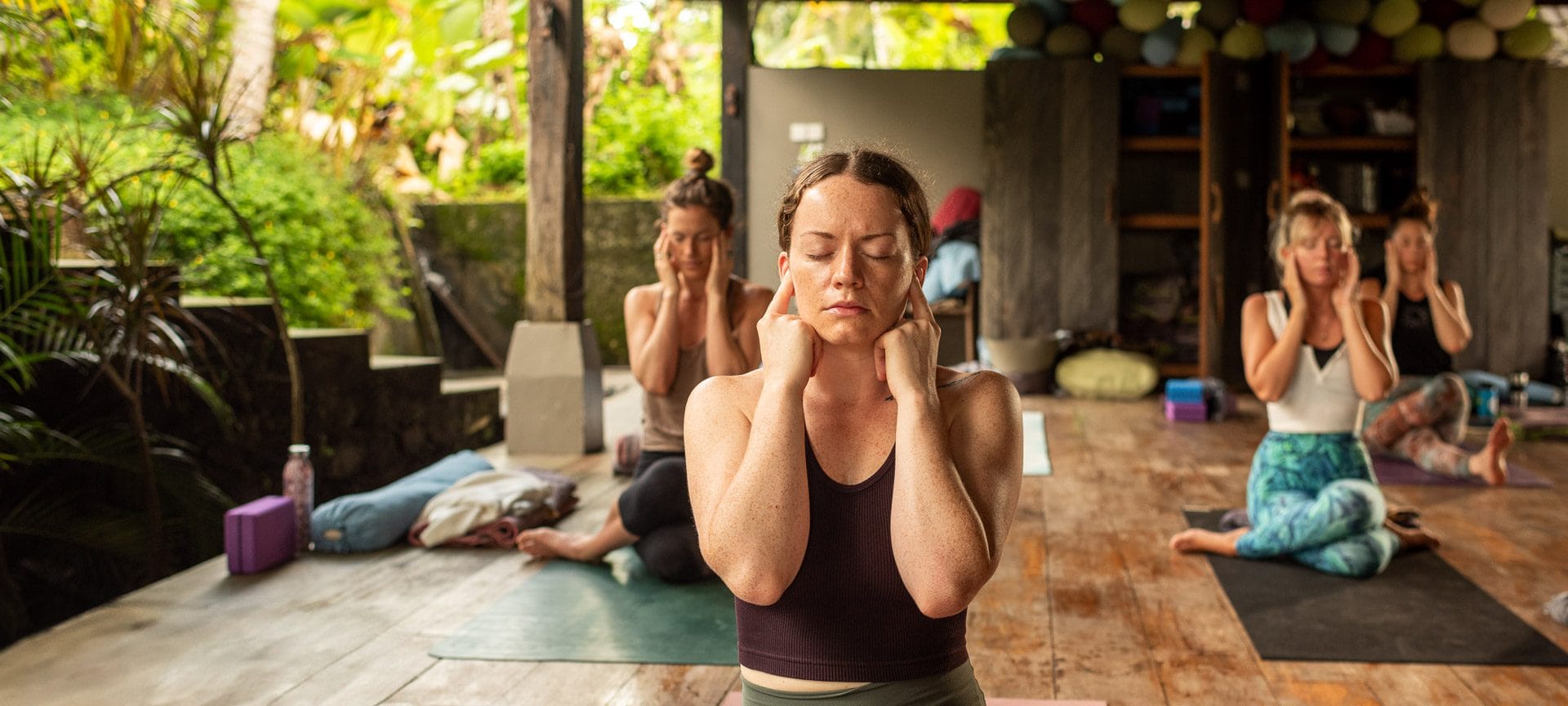My wife comes from a family of well educated, overachieving brainiacs. Me? I’m just a semi-humble yogi and a yoga teacher with fair success. Through many years of training in yoga, meditation, martial arts and philosophy, I have refined my own views of life and its recipes for happiness. My job is to share what I have learned. And my in-laws — who can best be characterized by their scientific training, intellectual rigor, a love of debate and a strong dose of agnosticism, can present a healthy intellectual challenge to my own views. Holding my own when discussing topics such as health and happiness with these well informed super achievers has been tough, but not impossible.
Often after making a claim to this audience about the benefits or mechanisms of yoga or meditation, I am confronted with comments and arguments that stem from the many pseudo-scientific claims made by past and present spiritual seekers and sages. “Where is the proof?” they will ask. One or more family members might even reach for an Ipad or smart phone like a warrior drawing their sword from the scabbard to crush me with a single search engine query. That is, if there isn’t an immediate counterargument at the ready, which there usually is.
The intellectual acumen of this posse has caused me to step up my own strategy by taking a more informed and less blindly faithful approach. Like the samurais of old, I must at any time be prepared to defend my position with skillful and calculated precision. It is a tactic any good teacher should be capable of performing to convince the intelligent and uninitiated. I have learned that the best defense in this situation is a good offense. Backing up my claims with valid science is the best way not only to diffuse the mounting attack, but also to gain an ally by opening their minds to new possibilities. Valid scientific case studies are essential for meaningful support.
It is not hard to understand the skepticism of non-believers when considering the widespread use of pseudo-scientific claims in the spiritual community. Spiritual disciplines have historically been equally populated with fakes, phonies and predators as with those who legitimately carry the torch of truth that can be supported by science. It has also been difficult to find medical research to substantiate the health and wellness claims that stream from the various traditions of yoga and meditation, as not many studies had been done. Until now.
Science Supports Meditation Benefits
The popularity of yoga and meditation in Western culture has touched nearly every social and professional group. This has brought forth an interest that is beginning to bridge the gap between seance and science. It has created a modern yogi who is beginning to stand on the legs of scientific rigor. Professionals in education, science and medicine who have been touched by the light of yoga are taking their experiences seriously.
A new wave of scientific research by major medical researchers such as Cambridge University, Harvard Medical School, UCLA Medical School, and the Mayo Clinic is just beginning to legitimize many of the claims found in traditional yoga and meditation that had previously been dismissed as medically unsupported pseudoscience.
Empirical evidence is leading us to the realization that meditation and yoga are no longer just for “new age” spiritual seekers. They can bring a number of benefits to anyone who takes the time to do the practices. Listen to the scientists explain the benefits of yoga and meditation and get ready to supercharge your own life! These studies are solid science that provide measurable neurological evidence of the benefits of breathing and meditation exercises.
A study published in the journal Frontiers in Human Neuroscience in February of 2012 by Eileen Luders, a researcher at UCLA, presents a strong case that meditation has powerful effects on the brain. The study finds that long-term meditators have larger amounts of gyrification (“folds” of the cortex, which are believed to be directly correlated to brain performance) than people who don’t meditate. The study also showed that the more experienced the meditator (years of practice), the more gyrification was present. [UCLANewsroom]
A 2005 study by SaraLazar, Ph.D., a professor in psychiatry at Harvard Medical School — “Meditationexperience is associated with increased cortical thickness” –– studies the brains of a test group comprised of meditators and non-meditators of various ages. Brain scans from the two groups revealed a higher level of grey matter density in the PrefrontalCortex region of the brain in the meditators compared to the non-meditators. This region is known to be responsible for complex cognitive behavior, personality expression, decision making, and moderating social behavior. It is where the orchestration of thoughts and actions in accordance with internal goals is performed.
Dr. Lazar explains, “This region of the brain is known to shrink as we get older. This is why as we age it becomes more difficult to figure things out, and our memory begins to fade. What we found in our study is the prefrontal cortex density of the 50-year-old meditators was the same size as the 25-year-old non meditators. This implies that the degenerative process has been altered by meditation.”
Dr. Lazar’s group was so compelled by their findings that they did a second study to try to confirm their results. In 2010, they published the study “Mindfulness practice leads to increases in regional brain gray matter density.” This study involved a group people that had never meditated before. Their brains were scanned before and after participation in an 8-week meditation course. They meditated twice daily for 30-40 minutes.
Dr. Lazar discovered that the region of the brain known as the hippocampus (responsible for learning, memory and emotional regulation) had significantly increased in density. A reduction of this region has been found in those with depression and post traumatic stress disorder. An increase in gray matter density was also found in the temporoparietal junction, which is responsible for the development of perspective, empathy and compassion.
Another very significant discovery was made showing a substantial decrease in gray matter density in the region of the brain known as the amygdala, which controls the fight or flight response and hosts the sympathetic nervous system. A measurable decrease in stress correlated to a measurable decrease in the size of the amygdala. A previous clinical study done with animals demonstrated that the amygdala becomes enlarged when the test subjects were exposed to continued stressful environments.
Dr. Lazar points out that in her own study, her subjects remained exposed to their normal stressful life conditions, i.e. professional, financial and relationship. This led to the overwhelming conclusion that the amygdala decreased in size as a result of their meditation practice and not as a result of changing environmental conditions.
These are just a few examples of how modern science is beginning to take the claims of traditional yoga and meditation seriously. Take the time to watch Dr. Lazar describe her motivations for her latest clinical research and the astounding results she experienced. Don’t forget to get your own meditation practice jump started while waiting for the next addition to this blog series. If you don’t have a practice, then stick around. We will be sharing many techniques and practices that anyone can do.
The beauty of meditation is that nearly anyone can develop an advanced practice quickly with the right guidance. The key to the promised land isn’t in the hands of the physically gifted but in the hands of those who consciously choose to make a difference in their lives.
The Science of Meditation Series by Everett Newell
Meditation Training in Bali Indonesia




